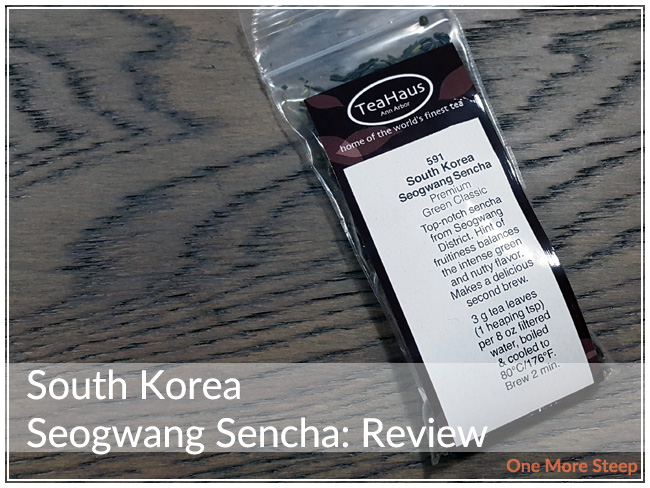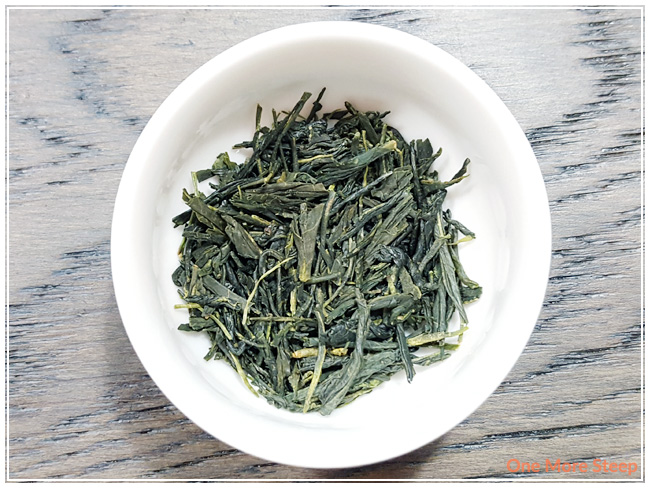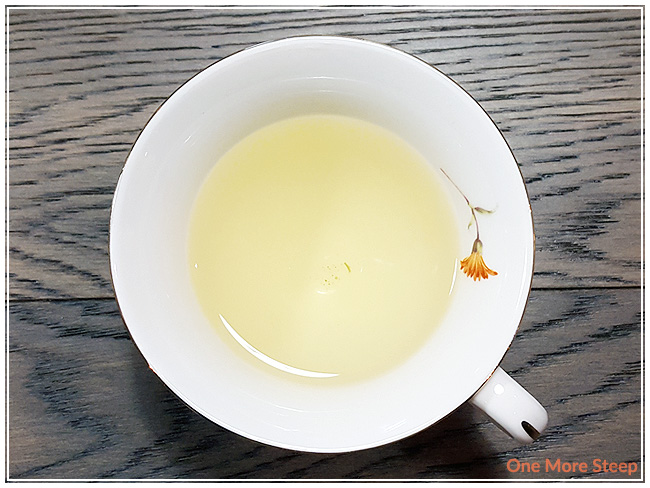South Korea Seogwang Sencha by TeaHaus
Green Tea / Straight
$14.40USD for 50g

TeaHaus has provided me with South Korea Seogwang Sencha for the purposes of providing an honest review. I received this product at no charge to me and received no other compensation.
First Impressions
When I was in contact with TeaHaus about sampling their teas, they asked me what I wanted to try and I went with my usual “send me whatever’s popular” because, like all good things, what is popular tends to be really good. So they did, and this is the first of several TeaHaus reviews.

South Korea Seogwang Sencha came to me in a sample bag and the first thing I could smell when I opened up the bag was mint. There was also notes of vanilla, light nuttiness, and berries to go along with the mint, but the mint was the first thing I noticed because it’s just a strong aroma. Seogwang Sencha is labelled as a “premium green classic” by TeaHaus and it’s a straight tea.
Preparation
TeaHaus recommends steeping South Korea Seogwang Sencha in 80°C (176°F) water for minutes and suggests that it can be steeped a second time.
First Taste
While I was waiting for Seogwang Sencha to steep, I couldn’t help but be impressed by the colour that it was steeping to. This South Korean sencha steeps to what I can only describe as a light dandelion yellow. There’s a slight salty aroma to the tea and I can’t wait to dive in. After waiting for it to cool just slightly, I’m happy to say that Seogwang Sencha has a very nice smooth mouthfeel to this tea, there’s no bitterness nor astringency to note. The minty notes that I initially inhaled from the dry leaf are more well-balanced in the steeped tea with the vanilla. The nutty flavours come into their own once the tea has been steeped, and the salty aroma adds to the overall umami of the tea. And those berry flavours I smelled in the dry leaf? It’s not as obvious in the steeped tea, but it’s there with the vanilla notes and it makes it tasty. Overall, I found that the tea wasn’t very naturally sweet, but the complexity in the flavour of this green tea makes sipping it worthwhile.

A Second Cup?
TeaHaus did suggest that South Korea Seogwang Sencha could be resteeped so I did have to try at least once (or twice). The first resteep was done for 2 ½ minutes and I found that the taste of the tea was very similar to the initial steep. The second resteep was done for 3 minutes and I found that the flavours were starting to wane, but were still tasty. The berry and vanilla flavours were quite diminished for the second resteep, so if that was your favourite part of this tea, I would recommend sticking to just the first resteep.

My Overall Impression
![]()
I loved TeaHaus’s South Korea Seogwang Sencha. I just loved how complex the flavour profile of this green tea was because there’s just so many little nuances in this tea that you really have to sit down and sip to appreciate. I must admit that I was confused at the minty notes that were all in-my-face at the beginning, but that’s part of what made this tea quite refreshing. Because of the salty notes in this tea, I think it’d go great with savoury foods over sweets if you’re looking for a food pairing. Something with substance with perhaps a bit of salt (like smoked salmon) would go great.
Curious about the cup rating system? Click here to learn more.